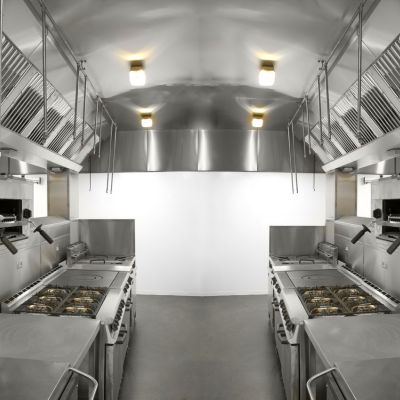Roast profiles are more than just a fancy term; it’s the key to unlocking the flavors and quality that you experience in your favorite cup of coffee or culinary creations.
Imagine this as the secret recipe behind your preferred roast: a rich espresso or a perfectly seared steak. To truly appreciate the art of roasting, let’s explore into the world of roast profiles and understand why they matter.
What Defines a Roast Profile?
Understanding a roast profile requires a closer look at its fundamental components. Imagine these components as the building blocks that come together to create the symphony of flavors in your coffee or the perfectly seared crust on a steak. Let’s explore these key elements that define a roast profile:
Roast Level: This sets the stage for the entire roast profile. It determines whether the roast will be light, medium, or dark. Each level imparts unique flavors and aromas to the final product.
Time: The duration for which the beans or ingredients are roasted plays a critical role. It’s about finding the sweet spot where the desired flavors are developed without crossing into bitterness.
Temperature: Roasting is all about temperature control. The range of temperatures during the roast significantly influences the chemical reactions happening within the beans or ingredients. It’s like conducting a delicate culinary symphony where precise temperatures are the notes.
Airflow: The flow of air during roasting affects how heat is distributed. Proper airflow ensures an even roast, allowing flavors to develop harmoniously.
These four components work in tandem, much like musicians in an orchestra, to create the final masterpiece – your roast profile. Understanding how each element contributes to the flavor and quality of your culinary creations is essential for any roaster or chef.
Understanding Roast Levels and Their Effects
Roast levels are akin to different notes on the flavor spectrum of roasted coffee beans or various culinary ingredients. These levels not only dictate the final product’s color but also profoundly influence the flavor, aroma, and characteristics. Let’s delve into the world of roast levels and their captivating effects:
1. Light Roast
Flavor: Light roasts often preserve the most origin-specific flavors. They tend to be brighter, with fruity and floral notes.
Aroma: Expect a delicate, tea-like aroma that can be quite captivating.
Bean Characteristics: Light roasts showcase the inherent qualities of the beans and their unique terroir.
2. Medium Roast
Flavor: A balanced profile with mild acidity and a fuller body. Notes of nuts, chocolate, and a slight caramel sweetness are common.
Aroma: The aroma leans towards a toasty, nutty scent with hints of sweetness.
Bean Characteristics: Medium roasts strike a balance between bean origin and roasting influence, resulting in a harmonious blend of flavors.
3. Dark Roast
Flavor: Dark roasts offer a robust, bold flavor with reduced acidity. You’ll find smoky, chocolaty, and sometimes even spicy notes.
Aroma: The aroma is often rich, smoky, and occasionally charred.
Bean Characteristics: Dark roasts tend to mask some of the unique characteristics of the beans, emphasizing the roast’s influence.
Each roast level is like a distinct instrument in an orchestra, contributing to the symphony of flavors in your cup or dish. The choice of roast level depends on personal preference, the culinary creation you have in mind, and the desired sensory experience you wish to evoke.
Roast Profiles in Coffee
When it comes to coffee, the role of roast profiles is nothing short of an art form. The nuances in coffee beans, their origin, and the roasting process itself all converge to create a symphony of flavors and aromas.
Let’s explore how roast profiles in coffee are a craft unto themselves:
1. Single-Origin Coffee
Unique Origins: Single-origin coffee beans are sourced from a specific region or even a single estate. Each origin offers distinctive flavor profiles based on that region’s climate, soil, and altitude.
Roasting Precision: Roasting single-origin beans requires precision to highlight their unique qualities. The roast profile is tailored to accentuate the inherent flavors, whether it’s the fruity notes of Ethiopian beans or the chocolatey richness of Colombian coffee.
Taste Exploration: Coffee enthusiasts often explore single-origin coffees to embark on a tasting journey around the world. Roast profiles here are carefully calibrated to unveil the true essence of these beans.
2. Flavor Notes
Acidity: The roast profile can influence the acidity of the coffee. Lighter roasts tend to have brighter, fruitier acidity, while darker roasts mellow it out.
Body: Roast profiles also impact the body or mouthfeel of the coffee. Lighter roasts offer a lighter body, while darker roasts can be fuller and more robust.
Aromas: The roast profile enhances the aromatic qualities of the coffee. It can bring out the bean’s floral, fruity, or nutty notes.
Roasters carefully select the roast level and duration to paint a canvas of flavors and aromas that will delight coffee drinkers.
The Role of Technology in Roast Profiling
In the world of roast profiling, technology has emerged as a formidable ally. It brings precision, consistency, and the ability to replicate those perfect roast profiles time and again. Let’s delve into how technology is transforming the art of roasting:
1. Roasting Machines
Temperature Control: Advanced roasting machines offer precise temperature control throughout the roast. This ensures that beans are roasted evenly, preventing under or over-roasting.
Data Logging: These machines come equipped with data-logging capabilities. Roasters can monitor and record temperature curves and other variables during the roast, allowing for meticulous analysis and adjustment.
2. Roasting Software
Profile Customization: Roasting software enables roasters to design and fine-tune roast profiles with great precision. They can experiment with various temperature and time parameters to achieve the desired flavor outcomes.
Consistency: Once a perfect roast profile is achieved, software can store and replicate it. This consistency ensures that every batch of beans meets the same quality standards.
3. Replicating the Art of Roasting
Industry Events: For hotels and restaurants seeking to stay on the cutting edge of roasting technology, industry events are invaluable. Trade shows and coffee expos showcase the latest roasting machines, software, and techniques.
Networking: These events also provide opportunities to connect with experts and fellow roasters, facilitating knowledge sharing and staying updated on industry trends.
Technology has elevated roast profiling from an artisanal practice to a precise science. It empowers roasters to craft profiles that bring out the best in coffee beans while ensuring consistency in flavor.
Conclusion
The careful selection of roast levels, the meticulous timing, and the precise temperature control all contribute to creating a symphony of flavors. Roasting is a craft where every batch of beans is an opportunity for a roaster to showcase their expertise.
At the same time, technology has ushered in a new era for roast profiling. With advanced roasting machines and software, consistency and precision are now within reach. Roasters can experiment, fine-tune, and replicate profiles to perfection. This marriage of art and science ensures that every cup of coffee or every dish prepared with these ingredients is a delightful experience.








